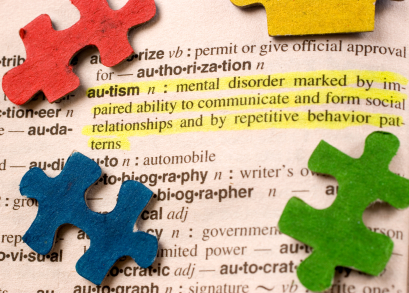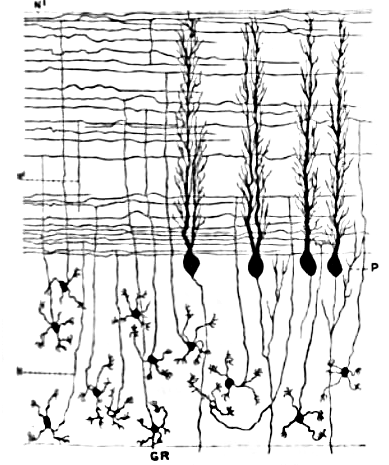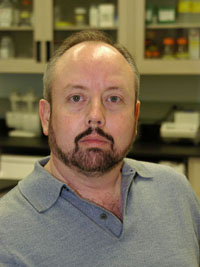Our state-of-the-art software for performing unbiased stereology is getting an upgrade. Faster, stronger, and better, has been a theme for us lately, as we improve our products across the board, but one place where this is especially striking is in Stereo Investigator. Set for release this spring, the new and improved Stereo Investigator will include a new imaging engine, display engine, automatic camera alignment, automatic lens calibration, the double disector, and live video zooming. “I’m...
Read MoreCustomer News

A baby makes eye contact with a passing stranger and his social development begins. Unable to resist the infant’s smile, the stranger smiles back and the baby starts to learn about human emotion through facial expression. But some babies, especially those on the autism spectrum, don’t make eye contact. What compels these tiny humans to avoid the eyes of people around them? Scientists specializing in developmental disabilities say the flocculus, a brain region in the cerebellum integral to eye movement control, may play a role in atypical gaze.
In their study of the postmortem brains of 12 autistic subjects and 10 control subjects, the research team, led by Dr. Jerzy Wegiel of the New York State Institute for Basic Research in Developmental Disabilities, in Staten Island, saw abnormally large flocculi in eight autistic subjects. According to the study, published last month in Brain Research, seven of these subjects exhibited “poor, very poor, or no eye contact” during the course of their lives.
Read More
Learning a new dance routine or how to ride a bike is possible because of Cerebellar Granule Cells (GCs) according to Galliano and colleagues in The Netherlands. To find out more about the role of these abundant brain cells, and why we have so many of them, the scientists silenced most of the GCs in a group of mutant mice. They found the rodents could balance and run as well as they ever did, but when it came to learning new activities involving motor function, the mice had a harder time.
Read MoreDo you use stereology in your lab? Would you like to know more about how you can use stereology to accurately estimate total quantities, lengths, areas, and volumes in your research? This month sees two separate stereology workshops. Dr. Dan Peterson's “Practical Workshop in Confocal Microscopy and Stereology” in Chicago, Illinois. And at Woods Hole, Massachusetts Dr. Mark West leads his “NeuroStereology Workshop.” Founding Director of the Center for...
Read More[caption id="attachment_1338" align="alignleft" width="150" caption="Dr. William Seeley"][/caption] MBF Bioscience congratulates our customer Dr. William Seeley on his 2011 MacArthur Foundation Fellows award. Dr. Seeley is an Associate Professor of Neurology at the University of California San Francisco Memory and Aging Center. His research area is regional vulnerability in dementia—why certain dementias attack specific neurons. Dr. Seeley leads the Selective Vulnerability Research Lab at USSF. Read about the John D....
Read MoreMBF Bioscience congratulates our friend and collaborator Dr. Patrick Hof for his appointment as the new editor-in-chief of The Journal of Comparative Neurology. Dr. Hof is the Irving and Dorothy Regenstreif Professor of Neuroscience and the Vice-Chair of the Department of Neuroscience at Mount Sinai School of Medicine in New York. He also directs the Center of Excellence on Brain Aging of the Friedman Brain...
Read More Talk of zebrafish and Spaceballs probes make Dr. Daniel Peterson’s microscopy and stereology courses sound intriguing. But Dr. Peterson says it’s the hands-on instruction that students enjoy most about the biannual workshops he teaches in Chicago. From August 15-19, 2011, the Associate Professor and Executive Director at the Center for Stem Cell and Regenerative Medicine at The Rosalind Franklin University of Medicine and Science, welcomes students to Chicago’s Club Quarters for five days of instruction on all aspects of state-of-the-art microscopy, stereology, and histological analysis.
Talk of zebrafish and Spaceballs probes make Dr. Daniel Peterson’s microscopy and stereology courses sound intriguing. But Dr. Peterson says it’s the hands-on instruction that students enjoy most about the biannual workshops he teaches in Chicago. From August 15-19, 2011, the Associate Professor and Executive Director at the Center for Stem Cell and Regenerative Medicine at The Rosalind Franklin University of Medicine and Science, welcomes students to Chicago’s Club Quarters for five days of instruction on all aspects of state-of-the-art microscopy, stereology, and histological analysis.
He spoke to us about the atmosphere in the classroom, what kinds of students take his course, and what aspects of the workshops participants get most excited about.
Read MoreDr. Edward G. “Ted” Jones, distinguished neuroscientist died Monday 6 June 2011 at the age of 72. Dr. Jones collapsed while talking with colleagues at a scientific meeting at the Ronald Reagan UCLA Medical Center. He suffered sudden cardiac death. Jack Glasser, president of MBF Bioscience said, “Ted was an outstanding neuroanatomist. Among many of his accomplishments, his work on brainmaps.org was a great contribution to...
Read MoreAsk any parent—when a teenage boy hits puberty, the transformation can be astounding. His voice deepens. His height skyrockets. The sex hormones surge. But what about the brain? It's changing too. Dr. Bradley Cooke of the Neuroscience Institute at Georgia State University studies sex-specific neural circuitry in the amygdala. His past investigations showed increases in regional volume and soma size of the medial amygdala (MeA), a...
Read MoreWho: Harvey Karten, M.D., Professor of Neurosciences Where he works: The University of California, San Diego Research focus: The evolution of the organization of avian brains. MBF Bioscience software used: Neurolucida Major scientific contributions: Neuroscientists use the bird brain model to better understand the organization and evolution of the human brain thanks to Dr. Karten's research on nonmammalian vertebrates. In addition, Dr. Karten is a brain-mapping pioneer. He is...
Read More- 1
- 2



